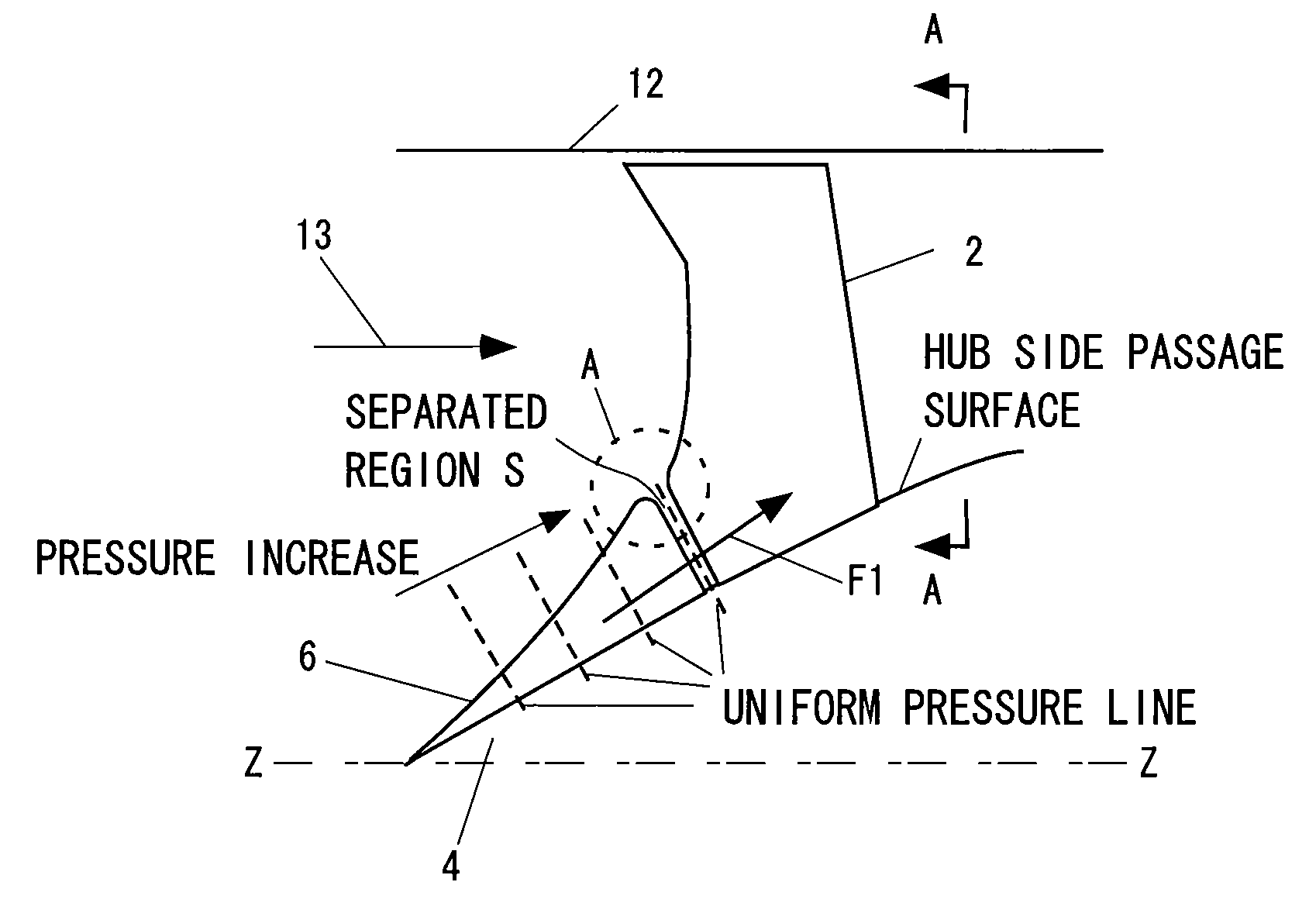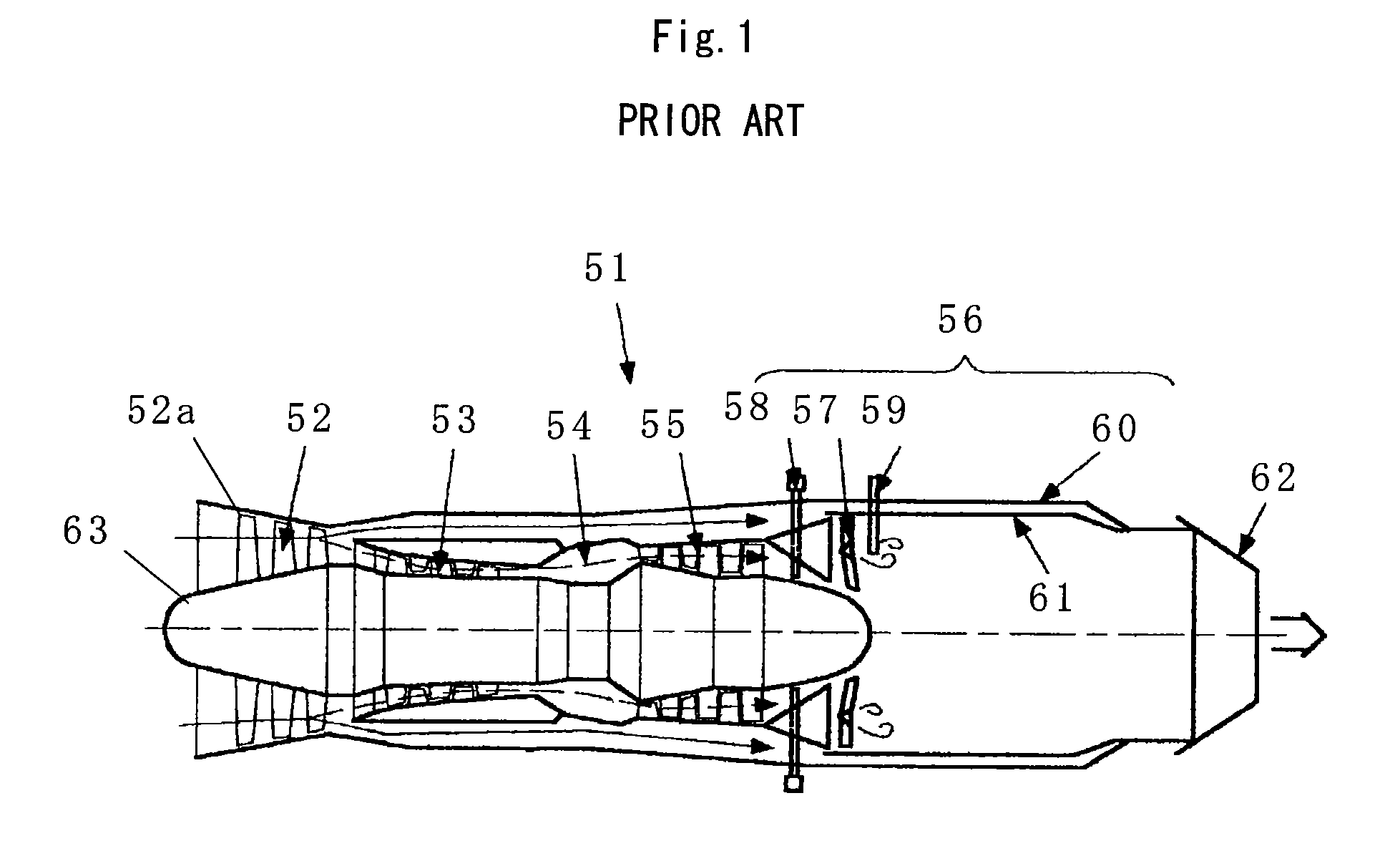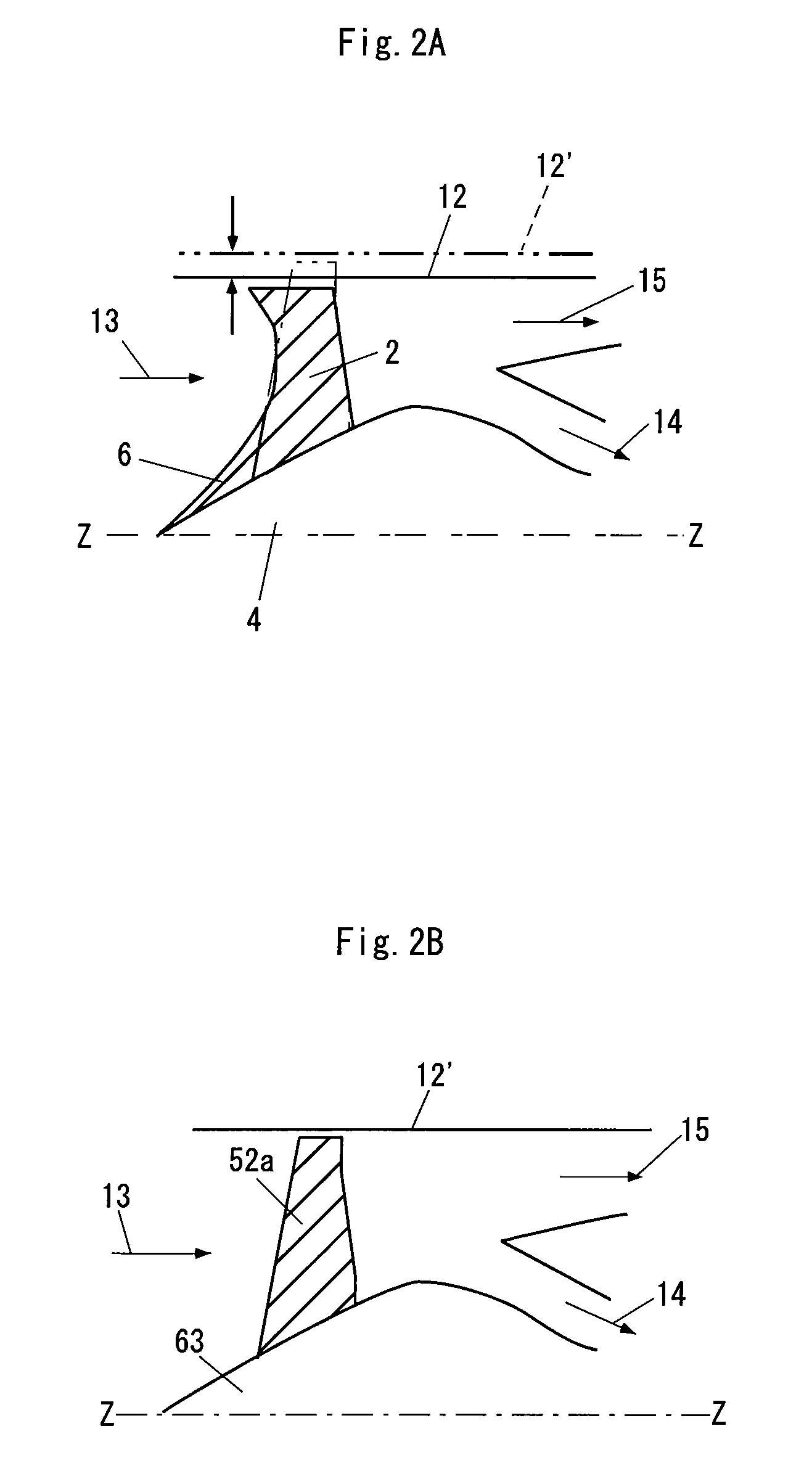Turbofan engine
a technology of turbofan and engine body, which is applied in the direction of liquid fuel engine components, non-positive displacement fluid engines, combustion air/fuel air treatment, etc., can solve the problems of increasing the weight of the engine, achieve high engine efficiency, reduce the flow, and reduce the pressure loss
- Summary
- Abstract
- Description
- Claims
- Application Information
AI Technical Summary
Benefits of technology
Problems solved by technology
Method used
Image
Examples
first embodiment
[0062]FIG. 2A is a partially structural drawing of a turbofan engine in accordance with the present invention. Further, FIG. 2B shows a conventional embodiment. In each of the drawings, reference symbol Z-Z denotes a center line of an engine, reference numerals 12 and 12′ denote an inner diameter of a casing, reference numeral 13 denotes a flow of an inflow air, reference numeral 14 denotes a core flow and reference numeral 15 denotes a bypass flow.
[0063]As shown in FIG. 2A, the turbofan engine in accordance with the present invention is provided with a fan first-stage moving blade 2 for taking an air therein, and a spinner 4 rotationally driving the fan first-stage moving blade 2. Further, the spinner 4 has a spiral blade 6 in a front face thereof. The spiral blade 6 extends spirally to an outer side in a radial direction from an axis Z of the spinner 4, sucks the air from the front face of the spinner, and compresses the air so as to supply to the fan first-stage moving blade 2.
[0...
second embodiment
[0072]FIG. 4 is a partially structural drawing of a turbofan engine in accordance with the present invention. As shown in this drawing, in accordance with the present embodiment, the spiral blade 6 is separated from the fan first-stage moving blade 2, and the same number of spiral blades as the fan first-stage moving blades 2 are arranged in an upstream side of the fan first-stage moving blade 2.
[0073]A strain is generated in a radial direction of the spiral blade 6 and the fan first-stage moving blade 2 due to a centrifugal force of a rotational motion, however, the strains are different between the both due to the difference of the both. Accordingly, in the case that the spiral blade 6 and the fan first-stage moving blade 2 are coupled such as the first embodiment 1, there can be considered that a harmful stress is generated due to the difference of the strains. Further, there can be considered that it is hard to couple the spiral blade 6 and the fan first-stage moving blade 2 due...
third embodiment
[0089]In the normal blade row, a boundary layer tends to be developed in a back side, and the pressure loss is generated in the portion. However, in the present invention, it is possible to expect an effect of blowing away the boundary layer in the back side of the fan first-stage moving blade 2 by arranging the spiral blade 6 in such a manner as to shift the phase to the back side of the fan first-stage moving blade 2 in the peripheral direction, whereby it is possible to reduce the pressure loss and it is possible to improve the engine performance. In this case, if the phase of the spiral blade 6 is shifted to the body side of the fan first-stage moving blade 2, the flow is disarranged, so that an adverse effect is generated.
[0090]Further, since the deformations in the peripheral direction and the axial direction are structurally generated in the fan first-stage moving blade 2 at a time of rotating, it is necessary to form the fan in such a manner as to prevent the spiral blade 6 ...
PUM
 Login to View More
Login to View More Abstract
Description
Claims
Application Information
 Login to View More
Login to View More - R&D
- Intellectual Property
- Life Sciences
- Materials
- Tech Scout
- Unparalleled Data Quality
- Higher Quality Content
- 60% Fewer Hallucinations
Browse by: Latest US Patents, China's latest patents, Technical Efficacy Thesaurus, Application Domain, Technology Topic, Popular Technical Reports.
© 2025 PatSnap. All rights reserved.Legal|Privacy policy|Modern Slavery Act Transparency Statement|Sitemap|About US| Contact US: help@patsnap.com



